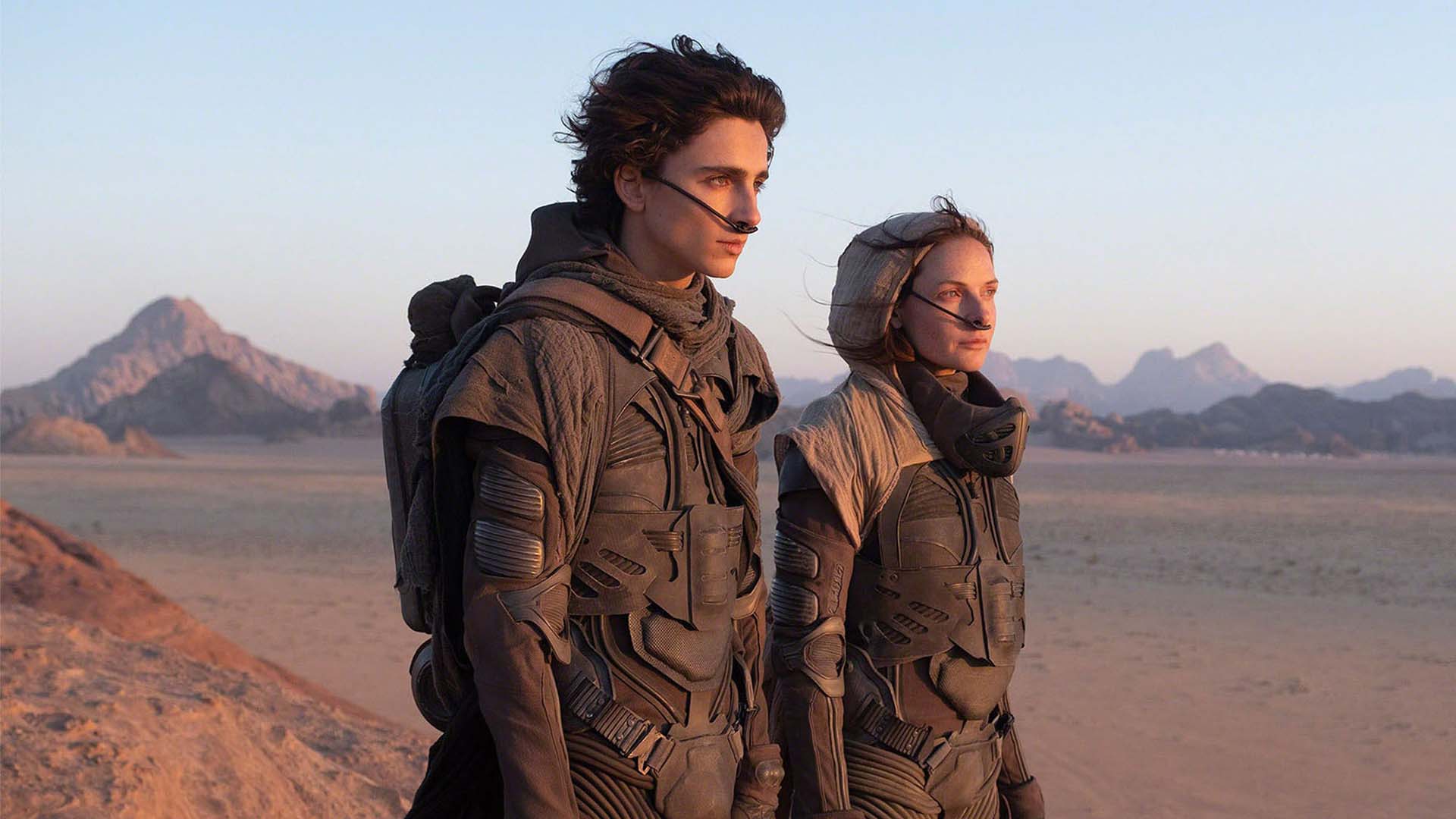
Replay: If you've caught it on streaming services recently, you may have heard that the latest adaptation of Frank Herbert's magnificent Dune was shot digitally on an Arri Alexa LF then transferred to 35mm film before being scanned back to digital again. If you also wondered 'why?' read on...
DP Greig Fraser tested 65mm, IMAX and 35mm film along with the Alexa LF. He decided that ‘pure film was too nostalgic for a Sci-Fi movie’ and ‘digital looked too sharp’. This process ‘softened the edges of the digital. It gave us something that film acquisition couldn’t give us, and it gave us something that digital acquisition couldn’t give us’. Laser recorded onto Kodak 5254 stock, they graded carefully to preserve the latitude and detail of the original but added minor imperfections unique to film, including a slight weave, softness and halation.
Could this softened look have been emulated in the digital realm? Probably. Would it have looked exactly the same? Probably not. Would that difference be significant? Pass. But on a budget of around $165m, the extra costs of this process are trivial. And, I have to say, Dune looked great on the cinema screen. But I feel it necessary to ask…
Why do people still shoot on film?
Picture quality aside for the moment, there are a number of reasons, if you are lucky enough to have the budget: the discipline and practice of a film shoot and its associated hardware, and the fact it actually has inbuilt limitations and flaws (whereas digital can look like anything, film tends to, well, look like film). There is also the prestige element: at the very high end, some demand to shoot on film because they can.
In terms of the actual image, film has always been lauded for the way it deals with highlights, softly compressing the wide dynamics of the real world. It also has a particular way of reproducing colour, which may or may not be satisfactorily emulated in the digital realm.
Magic grain
But none of those above features apply if you are originating via a digital sensor. What we are left with, effectively, is the one thing that is very hard to emulate: film grain. Not only is the grain different on every single frame, but the film image is actually composed of those grains; in most attempts to emulate grain, the granularity is imposed on an existing image. Because each film frame has a different grain structure, some would argue this increases the perceived resolution of the film (of course, in the days when shooting on film was the only option, grain was something to be minimised). Strangely enough, in the cinema Dune is not noticeably grainy.
A cursory look on the internet about the process used in Dune might lead you to believe that is was done by a small company in Kent, England called CPC. This is not actually the case (the digital-film-digital process for Dune took place in the USA), but CPC claim to be the only lab in the world specialising solely in digital to 35mm printing. Although their main business is making 35mm prints for the specialist cinemas who can and want to show them, they also have a couple of examples of short films that have used the digital-film-digital process to emulate the ‘film look’. Costs for their TruGrain™ process are very reasonable: around £500 for a 5 minute short, around £3000 for a feature.
The myth of film continues
There is still a romance around film; there are those who celebrate the scratches and blemishes on a film print just as there are those who relish the scratches and pops on a vinyl record. If you have ever run a 35mm cinema (as I did in the distant past) and had to collect and despatch heavy 35mm film cans, make up the prints on to large spools and break them down again and deal with damaged films and unruly projectors, you would have limited nostalgia for those days. Arguably, at its very best, film projection is superior but, in practice, I think the picture quality on our screens today has improved compared to the final days of analogue. Certainly, for the exhibitor, the automated DCP projection has allowed the proliferation of small, specialist screens which would have been impractical in the labour-intensive analogue days. For better or worse, the days of analogue cinemas are over.
As for originating on film, there are those who will choose to use it, more for its limitations than for its advantages; some just love working with the stuff. But, let’s be honest: shooting digitally, transferring to film then scanning back to digital does not make your pictures ‘look like film’ (remember that the Dune DP thought ‘film looked too nostalgic’). Your pictures will look different, just as transferring digital audio to analogue tape and back again will add a certain compression and warmth that might be appealing, but it can never be an improvement or refinement of the original source. One thing is for sure: shooting film will become increasingly expensive and niche while digital will just get better and cheaper. There is a huge amount of romantic nostalgia tied-up with the heyday of cinema, as if photochemical film has some inherent magic. Really, it is just a means to an end, a way of putting pictures on a screen. The real magic happens elsewhere.
Tags: Post & VFX Production Film


Comments